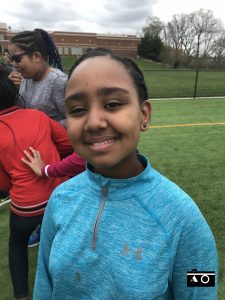For this project, we had to ask a person to smile and then not smile for a picture. It was really cool to see the difference in what people look like when they were smiling and when they were not. I don’t think this project was very difficult because all you had to was take a picture of someone. Although, it was a little difficult to pick and choose which person made the biggest difference. The biggest change I saw was the way a person looked. For example, a kid looked mean and not very friendly when he was not serious, and when he smiled, he looked nice and welcoming. Bias could affect a job as a photographer because if you take a photo of someone without them knowing, you could think they are different then what they actually are. If I was hired as a photographer, I would ask what type of photos they want and a little bit about their background. For example, if I was taking a picture of someone for graduation, i would ask them whether they wanted it to be more like a #scholar or more like a kid who just graduated and barely passed.
To see kool photos go here: https://docs.google.com/presentation/d/1BaEUzeo7fJHQZ4dEbM1CzE5SNwuFSwrsYJbPprr_pZM/edit?usp=sharing



